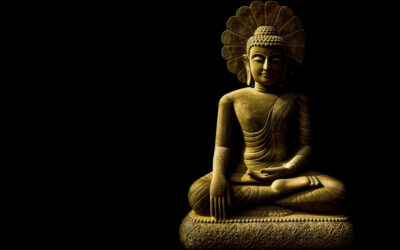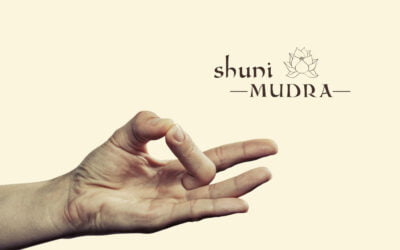Buddhi Mudra is a hand gesture commonly practiced in yoga and meditation which is believed to enhance mental clarity, concentration & intuition. Derived from the Sanskrit word “Buddhi,” meaning intellect or wisdom and “Mudra,” meaning gesture or seal, this mudra is believed to stimulate the brain and activate the energy centers related to intelligence & psychic abilities. In this article we will explore the benefits of practicing Buddhi Mudra, potential side effects, proper technique to perform & important precautions to keep in mind while practicing this powerful hand gesture.
benefits of buddhi mudra.
The benefits of practicing the Buddhi Mudra, a hand gesture used in yoga and meditation, are numerous and discussed as under:
1. Enhances mental clarity.
By activating specific energy channels in the hands the Buddhi Mudra aids in the stimulation of the brain & the enhancement of cognitive functions. This can result in improved mental clarity, sharper decision making skills and increased overall mental acuity.
2. Boosts concentration and focus.
Regular practice of the Buddhi Mudra may enhance concentration and focus by bringing a sense of stillness and tranquility to the mind. This can be particularly beneficial for individuals who struggle with distractions or have demanding intellectual work.
3. Increases intuition and insight.
This mudra is associated with activating the intuitive faculties of the mind. By bringing the thumb & pinky finger together, it is believed to open up the energy pathways for intuitive wisdom to flow more freely, allowing individuals to tap into their inner guidance and gain deeper insights into various aspects of their lives.
4. Facilitates clear communication.
Buddhi Mudra, which is known to enhance the throat chakra, is associated with clear and effective communication. Practicing this mudra can help individuals to express themselves more clearly, improving their ability to convey thoughts, ideas and emotions to others.
5. Balances emotions.
The Buddhi Mudra have a calming effect on the mind & emotions. It can help individuals to find inner balance, reduce anxiety and alleviate stress. By promoting emotional stability this mudra creates a conducive environment for personal growth and self awareness.
6. Heightens spiritual awareness.
As an integral part of yoga & meditation practices, Buddhi Mudra is believed to connect individuals with their higher self and deepen their spiritual awareness. It helps in aligning the mind, body and spirit also facilitating a sense of unity & harmony within oneself.
7. Supports decision making.
Due to its association with mental clarity and enhanced intuition, practicing the Buddhi Mudra may assist individuals in making wise & informed decisions. By quieting the mind and connecting with their inner wisdom, practitioners can access a clearer perspective, helping them make choices that align with their true purpose and values.
| 💡 Tips FreakToFit.com Incorporating Buddhi Mudra into a regular yoga or meditation practice may bring about these benefits, promoting overall wellbeing and personal growth. However, it is important to remember that individual experiences may vary and it is always best to practice under the guidance of a qualified teacher or practitioner. |
Side Effects of buddhi mudra.
It is important to be aware of its potential following side effects to ensure a safe and balanced practice:
1. Overstimulation.
One possible side effect of practicing Buddhi Mudra excessively or for extended periods of time is overstimulation. As this mudra is known for its ability to activate the mind & increase mental energy, overstimulation may lead to restlessness, hyperactivity or difficulty in finding a sense of calmness.
2. Mental Exhaustion.
Although Buddhi Mudra is beneficial for improving focus & concentration, excessive or prolonged practice might result in mental exhaustion. It is important to listen to your body and mind & take breaks when needed to avoid mental fatigue.
3. Imbalance.
While Buddhi Mudra is designed to enhance intuition and clarity, relying solely on this mudra without incorporating other practices or exercises may lead to an imbalance in other aspects of life. It is important to maintain a holistic approach to wellbeing & not solely rely on a single technique.
4. Distraction.
For some individuals practicing Buddhi Mudra may cause distraction rather than improved focus. This can occur due to personal differences in how the mudra affects the mind & body. If you find that you are becoming more scattered or unable to concentrate while using this mudra, it may be beneficial to explore alternative techniques or consult with a qualified yoga instructor.
5. Emotional Sensitivity.
Buddhi Mudra is associated with activating the energy of the third eye, which may enhance one’s intuitive abilities. However, this heightened sensitivity may also make individuals more susceptible to emotional fluctuations. It is essential to maintain emotional balance & self awareness while practicing this mudra as heightened emotions can sometimes be overwhelming.
6. Discomfort or Strain.
It is possible to experience discomfort or strain in the hand, wrist or arm while practicing Buddhi Mudra, especially if the mudra is held for an extended period or if there are pre existing conditions such as carpal tunnel syndrome. It is crucial to listen to your body and adjust or release the mudra if any discomfort arises.
| 💡 Tips FreakToFit.com To ensure a safe and beneficial practice, it is recommended to practice under the guidance of a qualified yoga teacher or practitioner. Additionally, it is essential to honor your body’s limits & modify the practice as needed to avoid any potential side effects. |
How to do buddhi mudra?
Here is a step by step guide on how to do the buddhi mudra:
1. Find a comfortable seated position.
Sit in a cross legged position or on a chair with your spine erect & shoulders relaxed.
2. Relax your hands.
Rest your hands on your thighs, palms facing up. Allow your fingers to naturally curl inwards towards your palms.
3. Bring your index finger and thumb together.
Gently touch the tip of your thumb to the tip of your pinky finger, while keeping the other three fingers extended. This gesture forms a circle or ring shape.
4. Hold the mudra lightly.
Maintain a gentle pressure between the thumb and pinky finger. The touch should be firm enough to create a connection but not so tight that it becomes uncomfortable.
5. Rest your hands on your knees.
Allow your hands to rest comfortably on your knees, ensuring that your arms & shoulders remain relaxed.
6. Close your eyes & focus on your breath.
Take a few deep breaths to center yourself and bring your awareness to the present moment. As you inhale and exhale, notice the sensation of your breath flowing in and out of your body.
7. Visualize energy flowing.
As you hold the buddhi mudra, imagine a flow of energy circulating between your thumb and pinky finger. Visualize this energy moving up from your fingers towards your mind, activating your intuition & enhancing mental clarity.
8. Stay in the mudra for a few minutes.
You can hold the buddhi mudra for as long as you like, however it is recommended to start with a few minutes and gradually increase the duration. Allow yourself to fully immerse in the practice, focusing on the sensations & energy flow.
9. Release the mudra.
When you are ready to end the practice, gently release the buddhi mudra by separating your index finger and thumb. Take a moment to observe any shifts in your mental state & overall sense of clarity.
| 💡 Tips FreakToFit.com The buddhi mudra may be practiced daily or whenever you feel the need for mental clarity and intuitive guidance. With regular practice this simple hand gesture can help you to cultivate a deeper connection with your inner wisdom and enhance your decision making abilities. |
Precautions during buddhi mudra.
While performing buddhi mudra it is important to take certain precautions to ensure a safe & effective practice. Here are some precautions to consider:
1. Warm up.
Before practicing buddhi mudra, it is recommended to warm up your body with gentle stretching exercises or a short yoga sequence. This helps to prepare your muscles & joints for the hand gesture and prevents any strain or discomfort.
2. Proper posture.
Sit in a comfortable and stable position, either on the floor or on a chair, with your spine erect & shoulders relaxed. Maintaining proper posture during the practice will help to ensure a smooth flow of energy and avoid any unnecessary tension in the body.
3. Breath awareness.
Begin the practice by focusing on your breath. Take a few deep, slow breaths & gently bring your attention to the present moment. Being aware of your breath helps to calm the mind and create a conducive environment for the practice of buddhi mudra.
4. Gentle hand positioning.
Bring the tips of your thumb, little finger and ring finger together while keeping the other two fingers extended. The joining of these fingers forms the buddhi mudra. However, it is important to avoid excessive pressure or force while forming this hand gesture. Maintain a gentle & relaxed grip to prevent any strain on the fingers and hand.
5. Avoid discomfort or pain.
If you experience any discomfort or pain while practicing buddhi mudra, release the gesture immediately. Listen to your body and make necessary adjustments to ensure a comfortable practice. It is always better to prioritize your wellbeing & make modifications as needed.
6. Duration and frequency.
Start with shorter durations and gradually increase the time spent in buddhi mudra. It is advisable to begin with a few minutes & then gradually work your way up to longer durations. Additionally, practicing buddhi mudra regularly, ideally daily, will provide better results. However, it is essential to listen to your body and practice within your own limits.
7. Consultation.
If you have any pre existing medical conditions or injuries, it is advisable to consult with a healthcare professional or a qualified yoga teacher before practicing buddhi mudra. They may provide personalized guidance and ensure that the practice is safe & suitable for your specific needs.
| 💡 Tips FreakToFit.com By following these precautions you can ensure a safe & effective practice of buddhi mudra, allowing you to harness the benefits of this hand gesture to enhance your mental clarity, intuition and overall wellbeing. |
Frequently Asked Questions.
The duration of holding the buddhi mudra can vary depending on individual preference and the specific practice or meditation. It is recommended to hold the mudra for at least 5 to 15 minutes to experience its benefits.
Yes, anyone can practice the buddhi mudra. It is a simple hand gesture that can be easily performed by anyone, regardless of age or physical ability.
Yes, the buddhi mudra can be combined with other mudras or hand gestures to enhance their effects. It can be practiced alongside other mudras such as the Gyan mudra (thumb and index finger touching) or the Dhyana mudra (hands resting on the lap).
Yes, the buddhi mudra may be practiced at any time of the day. However, it is often recommended to practice it during meditation, when you want to enhance your intuition or mental clarity or whenever you feel the need for better communication skills.
The buddhi mudra can be practiced by itself as a standalone practice. However, it can also be combined with other yoga postures, breathing exercises or meditation techniques to enhance its effects & deepen your practice.
There are no specific mantras or affirmations associated with the buddhi mudra. However, you can choose to silently repeat affirmations or mantras related to clear thinking, intuition or effective communication while practicing the mudra to enhance its effects.
Bottom Line.
The practice of Buddhi Mudra offers a powerful tool for enhancing mental clarity, focus & intuition. By bringing the thumb and little finger together, this mudra stimulates the connection between the brain and the heart, enabling us to access our inner wisdom and make more informed decisions. It serves as a reminder to cultivate a calm and balanced mind, free from distractions & negative thoughts. Regular practice of Buddhi Mudra can lead to a greater sense of self awareness, improved communication skills and a deeper understanding of ourselves and others. Incorporating this mudra into our daily meditation or yoga practice can help us to navigate through life’s challenges with a clear and discerning perspective. Embracing the power of Buddhi Mudra allows us to tap into our innate intelligence & make choices that align with our highest potential.

 Workout
Workout
 Meditation
Meditation


 Stories
Stories


 Podcast
Podcast E-book
E-book











